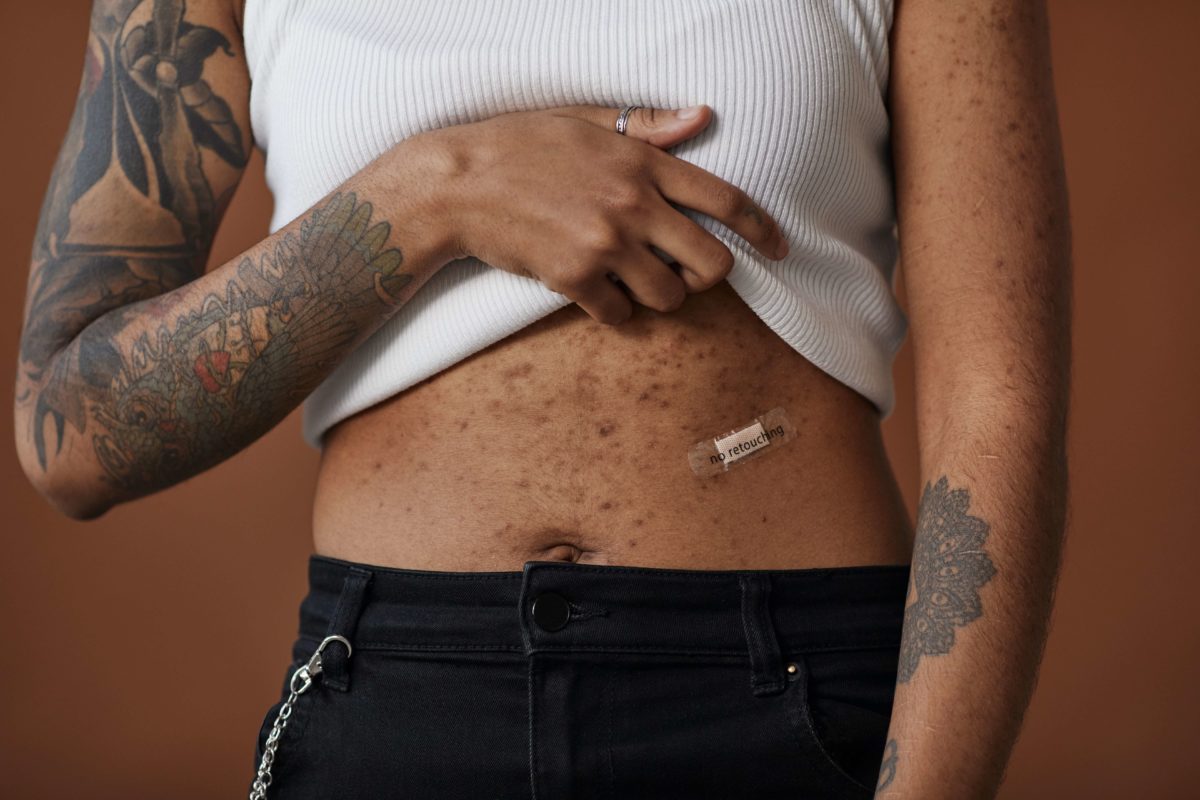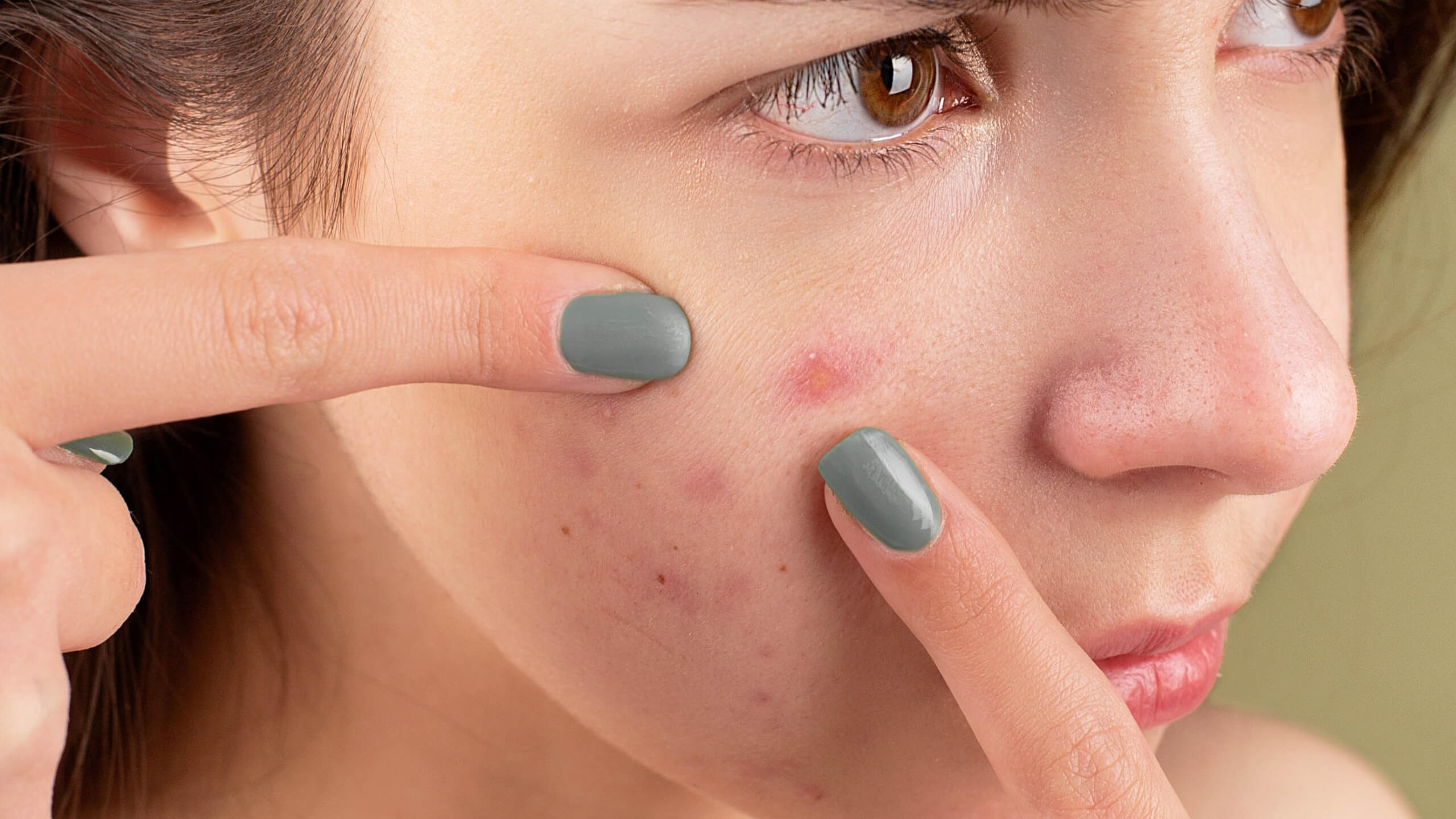Breakouts are difficult enough to navigate without the added stress of acne scars. Acne scars form after blemishes become inflamed. The acne pore swells, and sometimes, the blemish contents spill into the surrounding tissue, causing deeper scars.
Acne scars may make you feel self-conscious or uncomfortable in your own skin — trust us, we get it. This article can help you navigate the acne scarring treatment process. We’ll share helpful tips to help fade your acne scars and prevent future scarring.
Hyperpigmentation differs from acne scars — here’s how to treat it
Acne scars and hyperpigmentation are different, so they require contrasting remedies.
We spoke with Geeta Yadav, a board-certified dermatologist and founder of FACET Dermatology, who told us, “Hyperpigmentation — specifically, post-inflammatory hyperpigmentation (PIH) — is a kind of ‘stain’ that gets left behind on the skin after redness or irritation resolves. It generally fades and can even disappear altogether.”
In contrast, acne breakouts penetrate the skin deeply, damaging the skin and the tissue underneath. When your acne clears, your body tries to repair the damage by producing collagen to give the skin support. However, if your body produces too little or too much collagen, a scar could appear. We’ll discuss more about treating different kinds of acne scars later in this article.
When it comes to post-inflammatory hyperpigmentation, it can be much easier to treat as it doesn’t go as deep as acne scarring. You can combat hyperpigmentation with ingredients like vitamin C, retinol, and exfoliating alpha-hydroxy acids (AHAs). According to Dr. Yadav, these ingredients can help fade discoloration and prevent future formations of hyperpigmentation.
Types of acne scars

Acne scars develop when there’s a loss of tissue. Scar tissue can present as an indentation or a raised bump on the surface of the skin. Here are some of the specific types of acne scars:
Atrophic or depressed scarring:
- Ice pick. The ice pick acne scar appears as a hole that’s wide at the top and narrows down as it goes deeper into the skin. This scar type is fairly common but also one of the most difficult to heal. It typically appears where your skin is thinner, such as your forehead and upper cheeks.
- Rolling. This type of acne scarring appears as indentation with sloping edges, which makes the skin look uneven. It’s typically found on thicker skin.
- Boxcar. Boxcar acne scars appear as indents with sharp edges that go deep into the skin. These scars are usually seen on the lower cheeks and jaw.
Hypertrophic or keloid scarring:
- Keloid scarring is when a firm, smooth, hard growth occurs as a result of excessive scar formation, extending beyond the original wound area. They typically develop on the upper chest, shoulders, ears, and neck.
- Hypertrophic scars appear thicker and are limited to the area of damaged skin. These scars are more likely to regress and fade in comparison to keloids.
Acne scar treatments
The best treatment for fading the appearance of acne scars depends on the type of scarring you have. If the scar is deeper and more severe, professional treatments in a clinical setting may be necessary. “Unfortunately, hypertrophic scars are not easily treated at home,” Yadav said. “Treatment is best left to the professionals.”
Going to a dermatologist can be more effective because they have stronger devices than at-home products, which can accelerate the skin recovery process. However, most medical treatments require multiple visits and aren’t a quick fix. The quickest treatment to fade acne scars is a resurfacing procedure, as other treatments take multiple visits to see results and continued maintenance.
Types of resurfacing procedures

Dermatologists use the following resurfacing procedures to treat depressed acne scars:
- Laser skin resurfacing. This treatment removes the thin outer layer of skin and heats the underlying skin, which stimulates collagen growth. It improves the skin’s firmness and texture, regrowing the treated area.
- Chemical peeling. This procedure uses a chemical solution on the skin to remove the top layers. The skin that grows back is smoother.
- Dermabrasion. This procedure is a type of surgical skin planing. The skin is cooled, and then a specialized high-speed rotary instrument is used to sand the skin with the goal of removing acne, scarring, and other skin or tissue irregularities. It’s a more aggressive technique than microdermabrasion and does cause bleeding, requiring downtime.
- Microdermabrasion. This technique is also known as a power peel. Fine particles of aluminum oxide or sodium bicarbonate are sprayed on the skin with a suction to improve the appearance of acne scars and other skin-related concerns and conditions.
At-home acne scarring remedies
Some non-medical products can be used at home to help fade acne scars. Over-the-counter creams are best. Look for products that contain:
- Alpha hydroxy acids
- Lactic acid
- Retinoids
- Salicylic acid
At-home chemical peels can also help with acne scars. These products aid in helping with discoloration and textural changes. They even out your skin tone and boost collagen production.
Tips to prevent acne scars
The fewer breakouts you have, the less likely it is that you’ll develop acne scars. Treating acne is especially important to prevent scarring. Dr. Yadav said the best way to prevent acne scars is to keep your hands away from your blemishes. “Scarring is most frequently caused by people trying to pop their own pimples, which can not only introduce new bacteria or push the infection deeper into the skin (which worsens a pimple) but cause significant damage to the skin.”
Acne scarring doesn’t have to last forever
While acne scars are more difficult to fade than hyperpigmentation, there are many ways to treat them and reduce their appearance. Although the quickest remedy is through medical procedures, you do have options for at-home products that can help fade the appearance of acne scars. However, the easiest way to avoid scarring in the first place is to implement a gentle skincare routine and avoid picking or popping your pimples.





